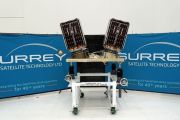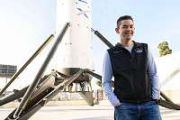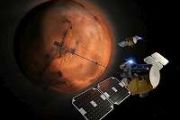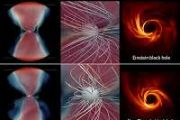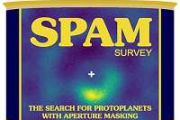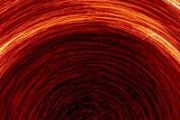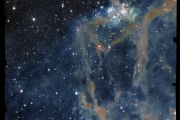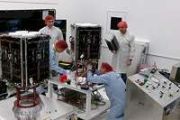
Copernical Team
Four astronauts return to Earth in SpaceX capsule to wrap up six-month station mission
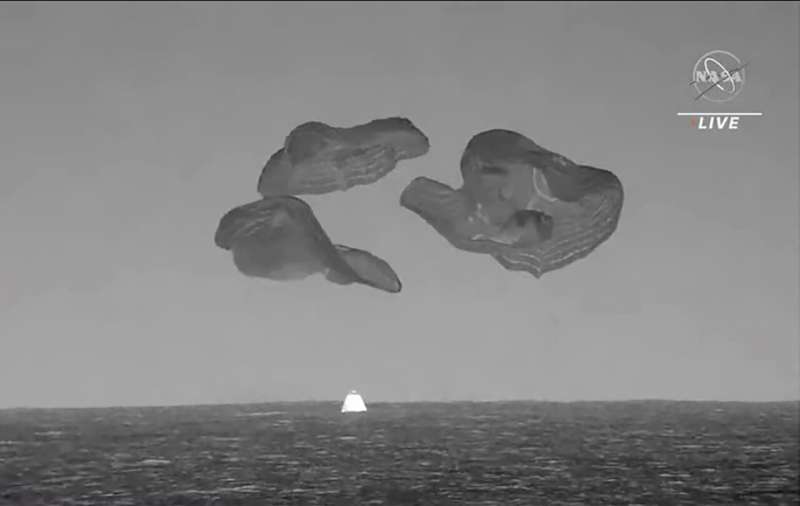
India's moon rover completes its walk, scientists analyzing data looking for signs of frozen water.

Unprecedented gamma-ray burst explained by long-lived jet
 Last year, Northwestern University researchers reported new observational evidence that long gamma-ray bursts (GRBs) can result from the merger of a neutron star with another compact object (either another neutron star or black hole) - a finding that was previously believed to be impossible.
Now, another Northwestern team offers a potential explanation for what generated the unprecedented
Last year, Northwestern University researchers reported new observational evidence that long gamma-ray bursts (GRBs) can result from the merger of a neutron star with another compact object (either another neutron star or black hole) - a finding that was previously believed to be impossible.
Now, another Northwestern team offers a potential explanation for what generated the unprecedented How is ESA supporting ISRO's Aditya-L1 solar mission
 The Indian Space Research Organisation (ISRO) has launched its Aditya-L1 solar observatory from Satish Dhawan Space Centre in Sriharikota Range (SDSC SHAR), India, at 11:50 IST (08:20 CEST) on 2 September 2023.
It's an ambitious mission that will generate vast quantities of science data as the spacecraft balances in an unstable orbit. With its global network of deep space ground stations a
The Indian Space Research Organisation (ISRO) has launched its Aditya-L1 solar observatory from Satish Dhawan Space Centre in Sriharikota Range (SDSC SHAR), India, at 11:50 IST (08:20 CEST) on 2 September 2023.
It's an ambitious mission that will generate vast quantities of science data as the spacecraft balances in an unstable orbit. With its global network of deep space ground stations a Hot Jupiter blows its top
 A planet about 950 light years from Earth could be the Looney Tunes' Yosemite Sam equivalent of planets, blowing its atmospheric 'top' in spectacular fashion.
The planet called HAT-P-32b is losing so much of its atmospheric helium that the trailing gas tails are among the largest structures yet known of an exoplanet, a planet outside our solar system, according to observations by astronome
A planet about 950 light years from Earth could be the Looney Tunes' Yosemite Sam equivalent of planets, blowing its atmospheric 'top' in spectacular fashion.
The planet called HAT-P-32b is losing so much of its atmospheric helium that the trailing gas tails are among the largest structures yet known of an exoplanet, a planet outside our solar system, according to observations by astronome New giant planet evidence of possible planetary collisions
 A Neptune-sized planet denser than steel has been discovered by an international team of astronomers, who believe its composition could be the result of a giant planetary clash.
TOI-1853b's mass is almost twice that of any other similar-sized planet known and its density is incredibly high, meaning that it is made up of a larger fraction of rock than would typically be expected at that sca
A Neptune-sized planet denser than steel has been discovered by an international team of astronomers, who believe its composition could be the result of a giant planetary clash.
TOI-1853b's mass is almost twice that of any other similar-sized planet known and its density is incredibly high, meaning that it is made up of a larger fraction of rock than would typically be expected at that sca Scientists detect and validate the longest-period exoplanet found with TESS
 Scientists from The University of New Mexico (UNM), and Massachusetts Institute of Technology (MIT) have detected and validated two of the longest-period exoplanets found by TESS to date. These long period large exoplanets orbit a K dwarf star and belong to a class of planets known as warm Jupiters, which have orbital periods of 10-200 days and are at least six times Earth's radius. This recent
Scientists from The University of New Mexico (UNM), and Massachusetts Institute of Technology (MIT) have detected and validated two of the longest-period exoplanets found by TESS to date. These long period large exoplanets orbit a K dwarf star and belong to a class of planets known as warm Jupiters, which have orbital periods of 10-200 days and are at least six times Earth's radius. This recent How does "MAD" accretion form around a black hole?
 An international scientific team has revealed for the first time the magnetic field transport processes in the accretion flow of a black hole and the formation of a "MAD"-a magnetically arrested disk-in the vicinity of a black hole. The researchers made the discovery while conducting multi-wavelength observational studies of an outburst event of the black hole X-ray binary MAXI J1820+070, using
An international scientific team has revealed for the first time the magnetic field transport processes in the accretion flow of a black hole and the formation of a "MAD"-a magnetically arrested disk-in the vicinity of a black hole. The researchers made the discovery while conducting multi-wavelength observational studies of an outburst event of the black hole X-ray binary MAXI J1820+070, using Copy and Paste at Gale Crater: Sols 3934-3935
 Earth planning date: Wednesday, August 30, 2023: Earth to Mars? Due to a communications issue, Curiosity didn't receive its instructions on time on Monday, leading to Curiosity taking an extended weekend break - just like its British colleagues!
Today, we're back on track with planning with a lot of discussions about the degree to which we should copy and paste the original plan intended f
Earth planning date: Wednesday, August 30, 2023: Earth to Mars? Due to a communications issue, Curiosity didn't receive its instructions on time on Monday, leading to Curiosity taking an extended weekend break - just like its British colleagues!
Today, we're back on track with planning with a lot of discussions about the degree to which we should copy and paste the original plan intended f Another successful hot-fire test for Ariane 6 upper stage
 On September 1 2023, teams from ArianeGroup, the German Aerospace Center and the European Space Agency (ESA) successfully completed another hot-fire test on the test bench dedicated to the upper stage of the new Ariane 6 launcher, in Lampoldshausen (Germany).
The upper stage test sequence was representative of its operating phase during Ariane 6's inaugural flight. It involved more than 11
On September 1 2023, teams from ArianeGroup, the German Aerospace Center and the European Space Agency (ESA) successfully completed another hot-fire test on the test bench dedicated to the upper stage of the new Ariane 6 launcher, in Lampoldshausen (Germany).
The upper stage test sequence was representative of its operating phase during Ariane 6's inaugural flight. It involved more than 11 

